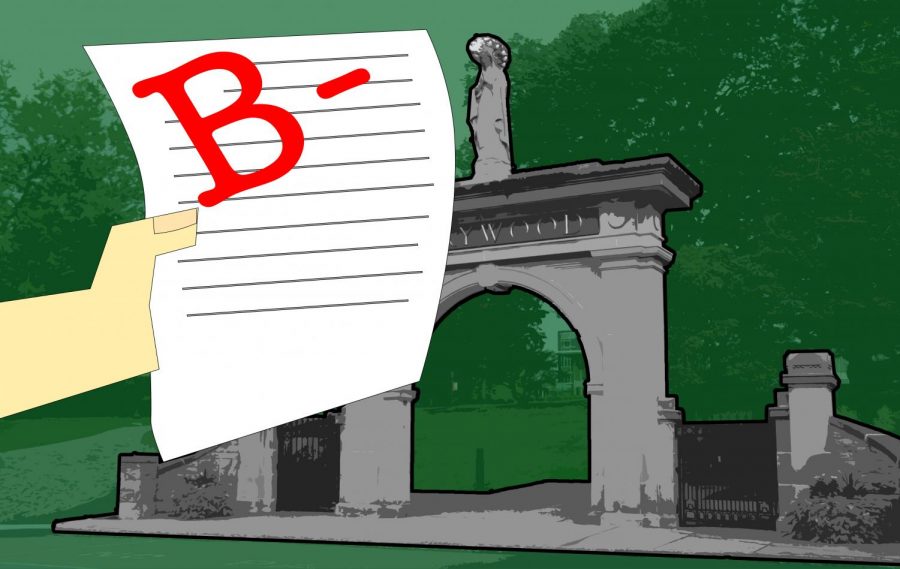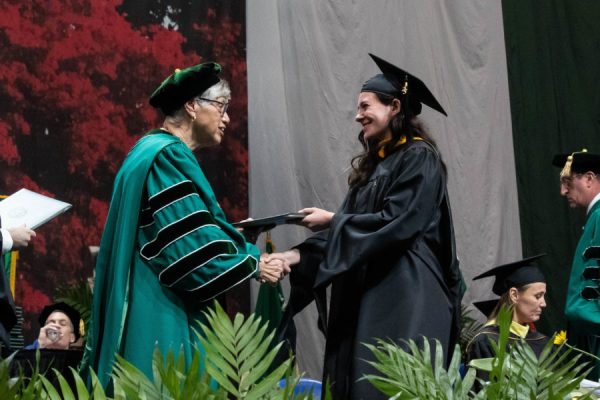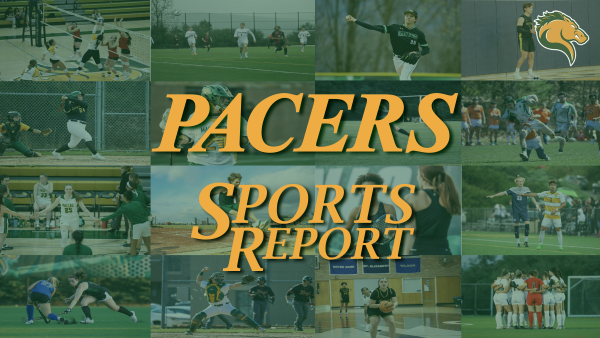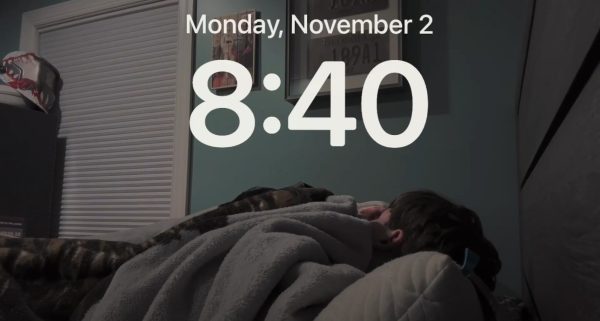Our Opinion: With many small positives, Marywood earns B-
May 17, 2018
Every year, The Wood Word scores Marywood University with a letter grade rating in our annual report card. For 2017, we gave the university a C because of a number of small but significant improvements that boosted it from 2016’s grade of a D.
Our grading scale is A-F and similar to a standard grading system; A is exceptional, B is above average, C is average, D is below average and F is of course, a failure. The scale also takes into consideration the weight of issues and events compared to one another and to previous years. Larger milestones and graver concerns outweigh the small positives and negatives.
Before we get to how and why The Wood Word graded Marywood in the 2017 to 2018 academic year, take a look at some student perspectives:
The school year has had its ups and downs, so let’s dive in to what helped and hurt Marywood’s final grade this year.
Where Marywood scored well
-Marywood has completed its follow up report with the Middle States Commission, cementing its status as an accredited university. The evaluation process that took place prior to 2016 is now fully complete until the 2025 academic year, and the university has fully complied with accreditation standards. Between academic programs and the accreditation standards, Marywood University is in good standing.
-Undergraduate enrollment is up this year. The 2017 Freshmen Orientation numbers show a continuing rise in enrollment numbers compared to previous years. The 2017 incoming class was at 533 during orientation, while the number of students who confirmed enrollment to the university in 2016 was 473, The Wood Word reported. Rising enrollment trends are incredibly positive.
-Students in the Physician Assistant program earned a 100 percent pass rate for the first time in 2017. This is a huge milestone for the program and for the university and is another testament to the quality of Marywood degree programs.
-Marywood scores positive points for its dedication to inclusivity and acceptance. Student Activities Crew (SAC) hosted a drag show in April, which shows that there is acceptance of diverse groups such as the LGBTQ community.
-Sr. Angela Kim, IHM, received a Fulbright award and will travel to Romania. There, she will share her research into refugee and immigrant populations with the academic communities of the University of Bucharest in Bucharest and Ovidius University in Constanta.
-The university completed the demolition of the old Learning Resource Center in the fall of 2017, and the amphitheatre designated to replace it is finally complete. The Learning Commons construction began in 2013, and the completion of the demolition and amphitheatre mark the very end of the construction surrounding the building.
-Marywood brought in a lot of money in donations this year. On April 12, the third annual Giving Day netted donations from 550 donors, with a goal of 412. Donors bought shirts for $20.18, and the proceeds went to any of 26 donation projects including clubs, organizations and the Marywood Scholarship Fund. The university held the 2018 Community Leadership Dinner on May 3 and brought in $485,620, which is the most the dinner has raised in a single year.
Where Marywood scored poorly
-Last fall, changes were made to the meal plan services and dining options on campus. While prices at Nazareth Dining Hall were lowered, they’re still substantially higher than other options on campus for very similar items. The weekly five meal swipe limit at the Atrium and Learning Commons Cafe is unfair to students who do not eat at the Nazareth Dining Hall. For students who spend most of their time in McGowan or the Learning Commons, the Dining Hall is not always a viable option compared to the faster and cheaper alternatives. The number of food items offered at the Learning Commons Cafe is now more limited and the cafe hours are shortened.
-In the summer of 2017, the Chief Information Officer (CIO), the Associate Vice President for Marketing and Communications and the Director of Alumni Engagement all resigned their positions abruptly. Comments posted to Facebook in response to the original Wood Word report of these resignations raised questions over the veracity of the resignations, and some suggested the three were “forced to resign.” The Wood Word also received an anonymous letter saying that CIO Tony Spinillo was fired. The administration maintained that Spinillo and the others voluntarily resigned, despite the allegations. The uncertainty of this situation raises concern.
Areas in need of improvement
-The first major safety concern since the 2015 bomb threat occurred last fall. An armed student caused alarm on campus in October, and the campus has dealt with the fallout ever since with recently holding an active shooter drill in April. The incident was handled quickly and with care. Nobody, including the armed suspect, was harmed and the threat was minimized in minutes. However, the incident raised concerns of safety measures on campus. There was no campus-wide alert sent out until the incident had been handled, leaving much of the campus in the dark during a vital time. So far, the April drill was the only campus-wide drill after an initial presentation in December, and a “full scale drill with police responders, fire, and emergency medical services” has not been held. As per the December presentation and drill, there have been a number of ideas for safety improvement floated, but not much implementation.
-After the Strategic Resource Allocation (SRA) report suggested a revision to the core curriculum, a Core Curriculum Revision Task Force designed a new core curriculum model informed by the report. A Core Curriculum Committee voted “yes” on the new model, and a final approval from Provost Dr. Susan Turell set the new model in motion for fall of 2019. The Wood Word has said before that the new model needed more time to be fully worked out before it should be approved and implemented. There are a number of questions and issues not fully answered by the current draft of the model, and the final model might not be ready until closer to the fall 2019 semester. Implementing a new core curriculum is a major undertaking, and Marywood is rushing into the new model.
-After three years of wondering about the fate of the South Campus property, an “option and purchase” agreement was signed in January. Though the buyer, Urban Smart Growth, will have
13 months to decide if they want to go through with the purchase, they have detailed plans for the property. The sale will lift a huge financial burden ($8,000 in upkeep and up to $25,000 in insurance, annually) off the university. While the sale of the South Campus property is a good thing, the circumstances of the sale are another question. The Wood Word uncovered information about Lance Robbins, CEO of Urban Smart Growth, the company that plans to purchase the property. Sources confirmed that Robbins had numerous legal difficulties as a landlord in Los Angeles and Rhode Island. Robbins was also sued by a former business partner. This information causes concern over the level of scrutiny in the administration’s approval process. The deal will bring Robbins’ and Urban Smart Growth’s controversial business into the community and their work and impact should be watched closely.
There’s no denying that the 2017 to 2018 academic year had its positive moments. However, there were still low points that need to be addressed. Some of these issues, like the safety of the entire campus, outweigh the many small positives. Marywood scores higher than the 2016 to 2017 Report Card grade of a C, coming in at a B-. Congratulations, Marywood, on your improvement. Let’s hope there’s no way but up from here.















